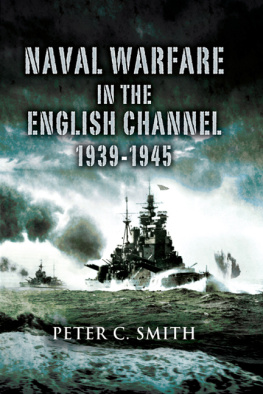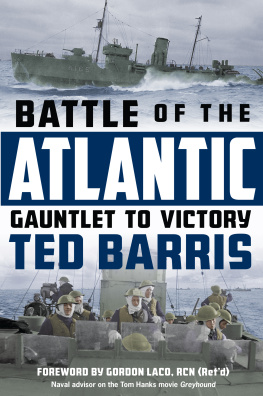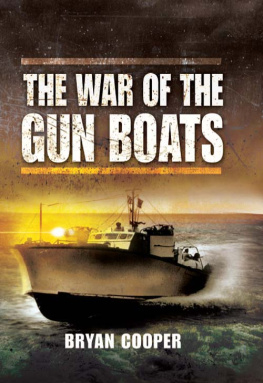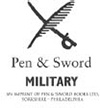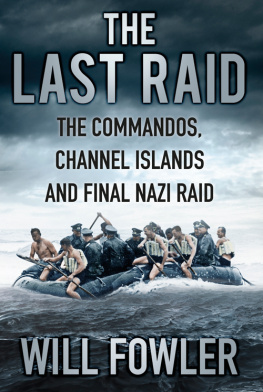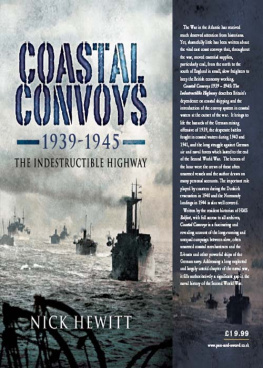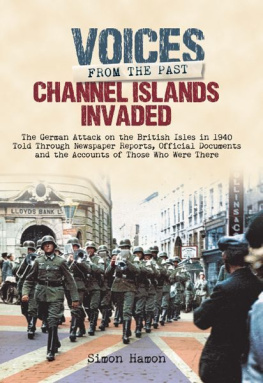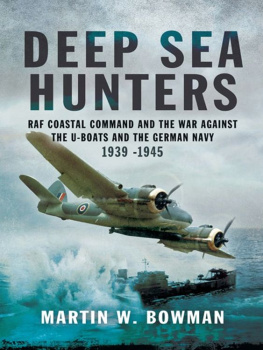

First published in Great Britain in 2007 by
Pen & Sword Maritime
an imprint of
Pen & Sword Books Ltd
47 Church Street
Barnsley
South Yorkshire
S70 2AS
Copyright Peter C. Smith 2007
ISBN 978 1 844155 804
eISBN 9781844682478
The right of Peter C. Smith to be identified as author of this work has been asserted by him in accordance with the Copyright, Designs and Patents Act
1988.
A CIP catalogue record for this book is available from the British Library
All rights reserved. No part of this book may be reproduced or transmitted in any form or by any means, electronic or mechanical including photocopying, recording or by any information storage and retrieval system, without permission from the Publisher in writing.
First edition published in 1984 as 'Hold the Narrow Sea' by Moorland Publishing, Ashbourne.
Typeset in Sabon by Lamorna Publishing Services.
Printed and bound in England by CPI UK
Pen & Sword Books Ltd incorporates the imprints of Pen & Sword Aviation, Pen & Sword maritime, Pen & Sword Military, Wharncliffe Local History, Pen & Sword Select, Pen & Sword Military Classics and Leo Cooper.
For a complete list of Pen & Sword titles please contact
PEN & SWORD BOOKS LIMITED
47 Church Street, Barnsley, South Yorkshire, S70 2AS, England
E-mail: enquiries@pen-and-sword.co.uk
Website: www.pen-and-sword.co.uk
A complete list of books written by Peter C. Smith can be found at
www.dive-bombers.co.uk
For
Alfred Horstead, HMS Narwhal

1. The English Channel.

2. The Flotilla Leader HMS Codrington , leader of the 19th Destroyer Flotilla in the Narrow Sea in 1939. She had the reputation of being one of the fastest ships in the Royal Navy at this time.
(Wilf Lawson)

3. The Dover Patrol. Ships of the destroyer flotilla based at Dover on patrol, as seen astern from the after bridge of the Flotilla Leader HMS Codrington, early in 1940. (Mrs P. Devarney)

4. In the tradition of World War I, the destroyers of the 19th Flotilla took up the guardianship of the Narrow Sea on the outbreak of war. This photograph shows the Flotilla Leader HMS Codrington entering Dover Harbour flying the Royal Standard with HM King George VI on the bridge. (Captain C. S. B. Swinley, DSO, DSC, RN)

5. Captain Creasy, commanding officer of HMS Codrington , now leading the 1st Flotilla in place of the sunken HMS Grenville , holds the infant Dutch princess in his arms, as her mother, Princess Juliana, disembarks at Harwich following their dramatic rescue in May 1940.
(Mrs P. Devarney)
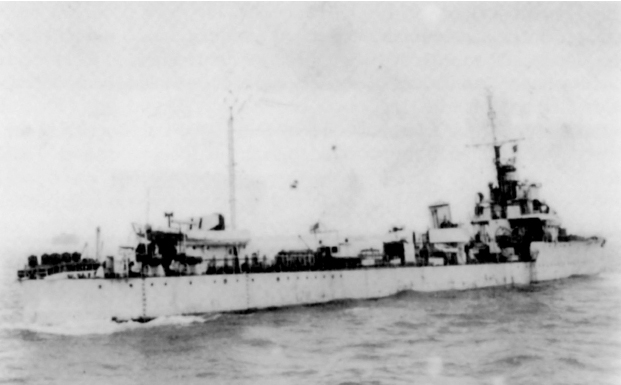
6. One of the ancient V and W class destroyers from the First World War which served with distinction in the Narrow Sea. This is HMS Vanquisher , seen here in 1943 after her armament had been reduced and she was serving as a convoy escort ship.
(MOD Navy)

7. Admiral Sir Bertram Home Ramsay, KCB, MVO, RN, Black Ramsey to the destroyer crews who served under him. He organised the salvation of the BEF at Dunkirk, held Dover Commands forces together in the dark days that followed, and was the brilliant naval organiser of the victorious D-Day Normandy landings back in France in 1944. (Imperial War Museum, London)
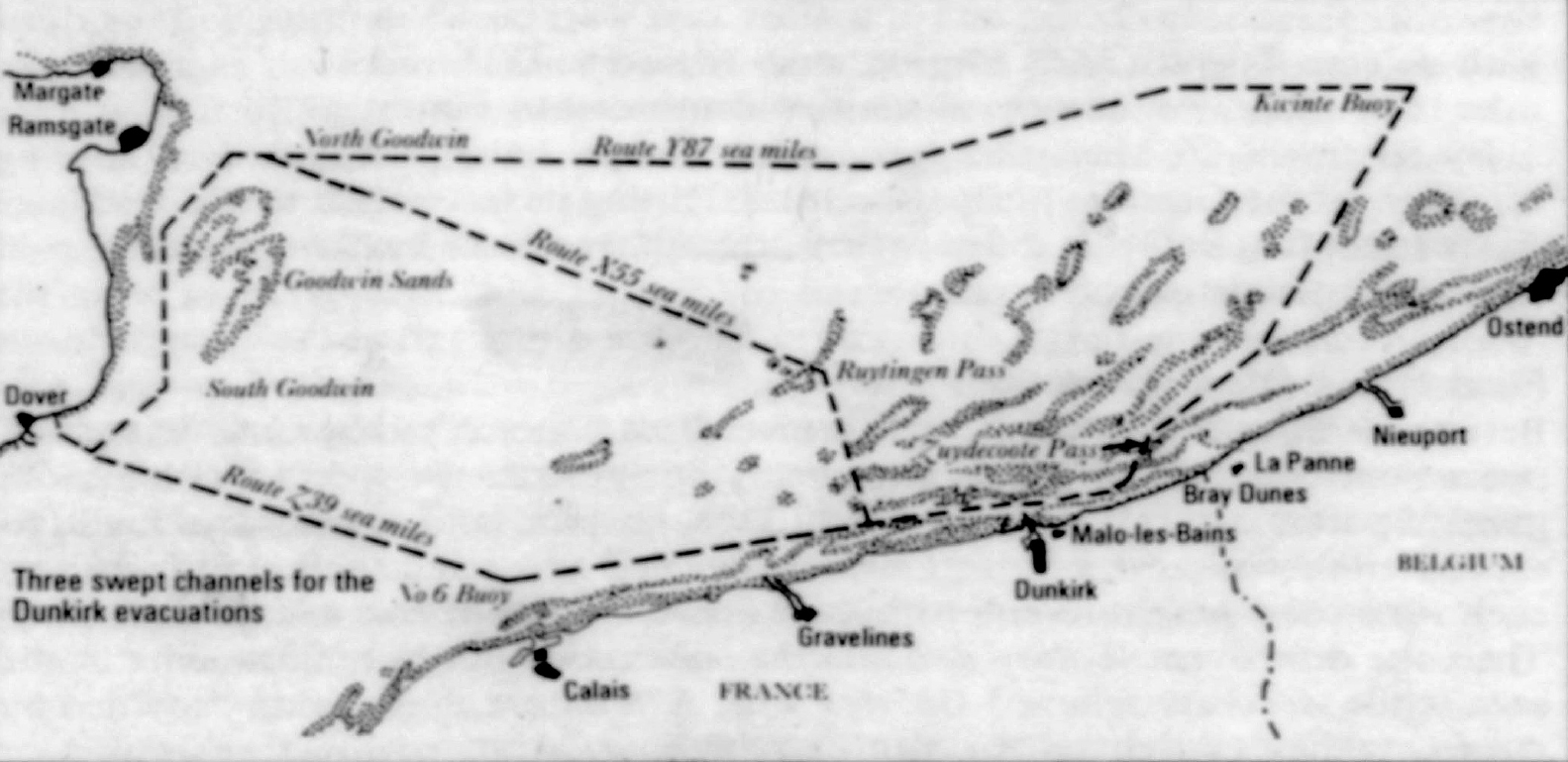
8. The swept channels for the Dunkirk evacuations.
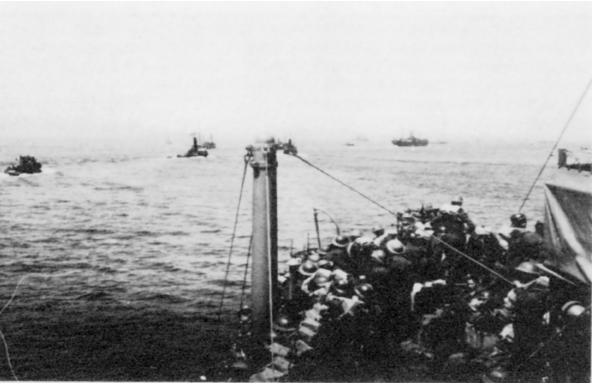
9. Farewell Europe! A very mixed collection of ships making their way back from one of the channel ports during the evacuation of France in June 1940. Freighters, tugs, small motor launches, all make their way slowly to safety. Aboard, a mixed complement of French and British troops saved from years of imprisonment.
(Imperial War Museum, London)
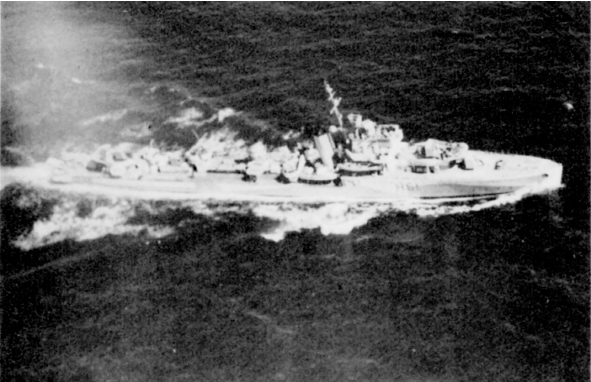
10. The minelaying destroyer HMS Express . She served in the famous 20th (Minelaying) Flotilla early in the war, but was diverted to Dunkirk where she served well in the forefront of evacuation operations. Later in the war she was handed over to Canada.
(MOD Navy)
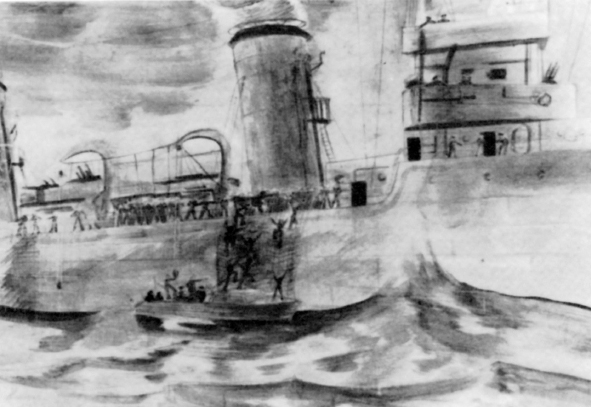
11. A mixed contingent climbing aboard the destroyer HMS Boadicea after having been taken off the beach at Veulette on 10 June 1940.
(From the painting by Richard Seddon by kind permission of the artist)
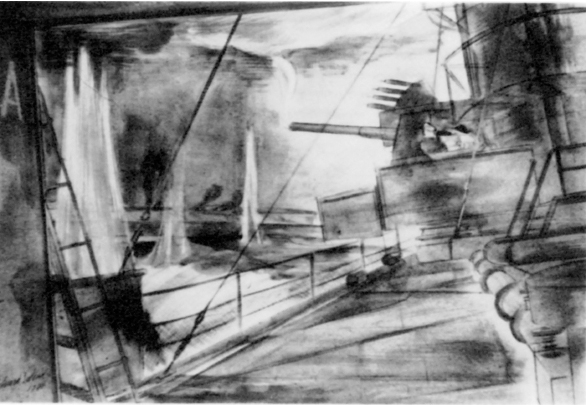
12. The destroyer HMS Boadicea engaging German tanks ashore with her main armament off the coast of France, 10 June 1940.
(From the painting by Richard Seddon by kind permission of the artist)
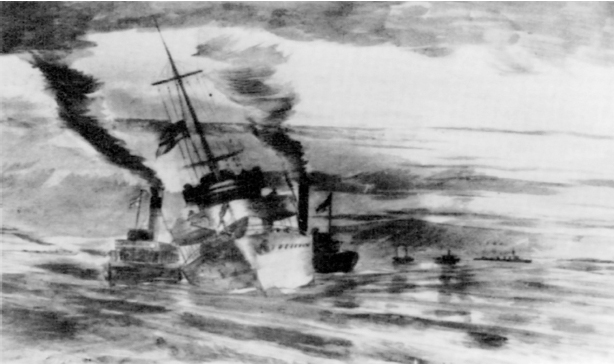
13. After being severely damaged by Stuka dive bomber attack, HMS Boadicea was towed home by the destroyer HMS Ambuscade and finally nursed into Portsmouth harbour after a voyage back through fog with many wounded men and evacuees aboard (not to mention the dog!)
(From the painting by Richard Seddon by kind permission of the artist)
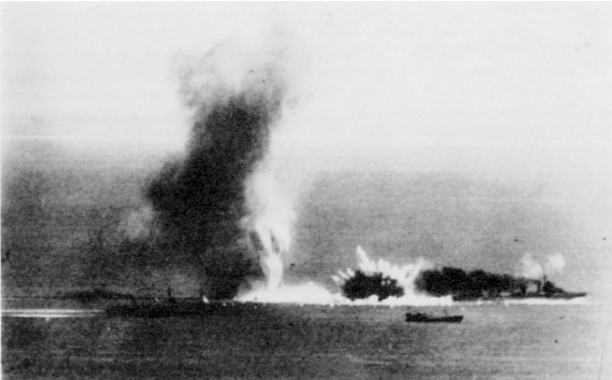
14. Stuka Attack! Bombs bursting and exploding astern of a Beagle Class destroyer as she accelerates away, her AA guns firing.
(Imperial War Museum, London)
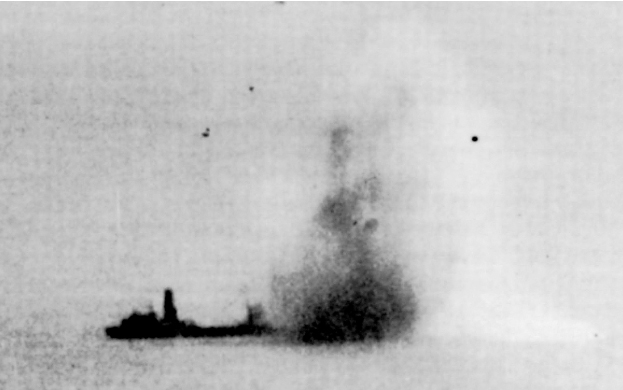
15. Prior to the Battle of Britain, the German dive bomber forces were concentrated on the Channel coast of France and in heavy attacks throughout July and August caused severe losses to British coastal convoys. This film clip records a very near miss on a small coaster by a 550lb bomb.
Next page
